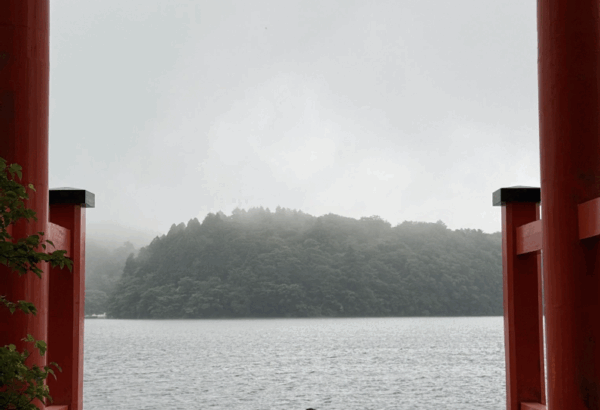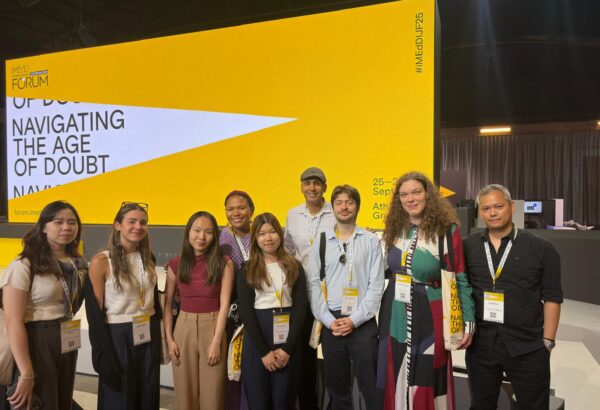Reimagining Dialogue: Inventing New Metaphors
by the Class of 2028 SNF Paideia Fellows
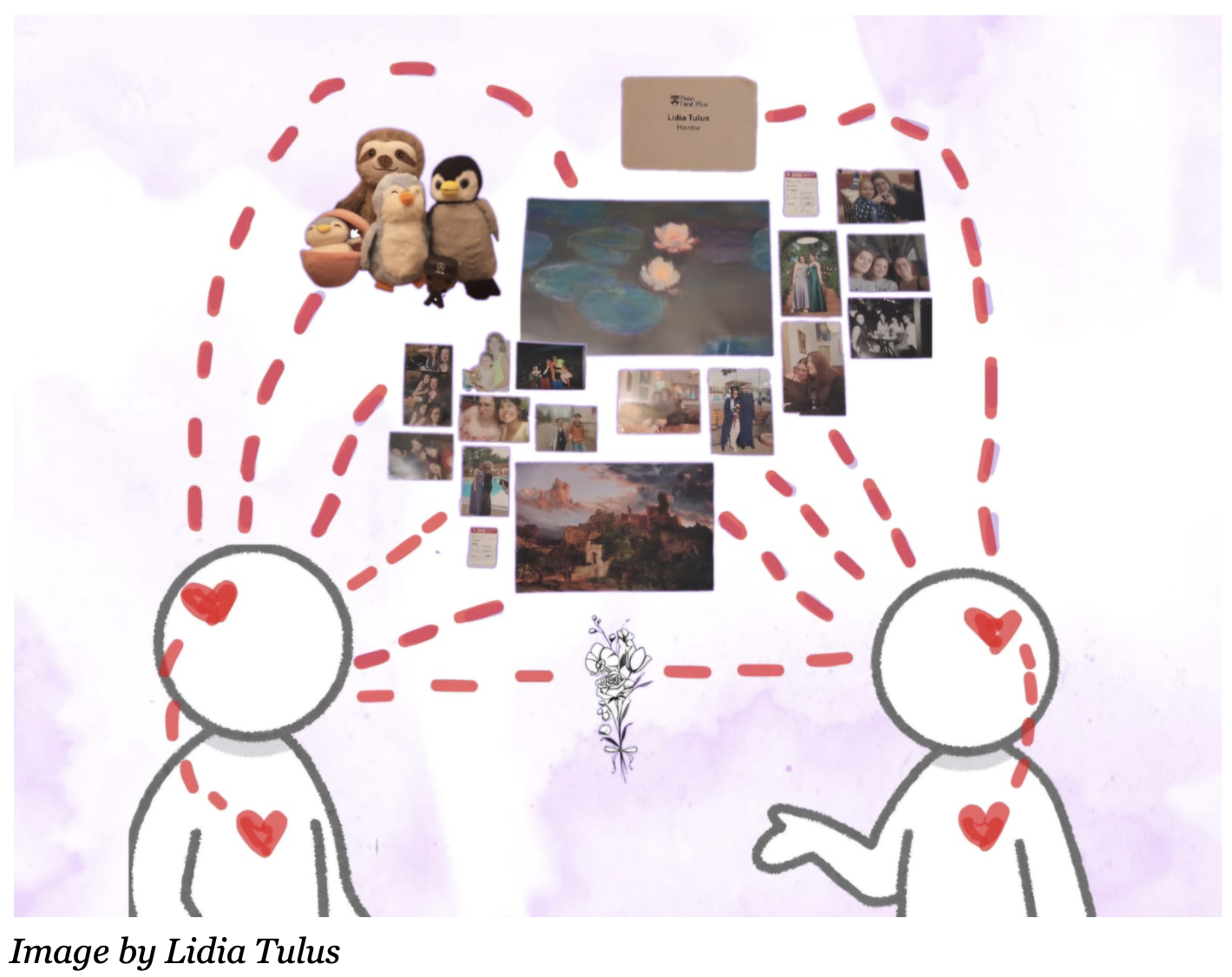
In this DiaLogic essay from February 2025, we considered how the metaphors and conceptual frameworks that a culture chooses to describe ideas and practices “do not reflect what we individually believe and how we individually behave so much as they teach us, collectively, how to believe and behave.” We noticed how frequently metaphors of war and domination are used in English – the globally dominant language in which so many of our dialogues take place – to describe the dialogic effort, and how those metaphors subconsciously guide us “to understand and experience individual learning, collective social progress, and interpersonal communication as inherently competitive efforts of domination, power, and control.”
If, as we suggested then, “the macro reverberates through the micro, and vice versa; the small choices we make in how we communicate with one another not only reflect and reproduce, but also reify larger structures and practices,” how might conceptualizing dialogue differently help us to actually experience and practice dialogue in a new way?
This was the premise of the first assignment our newest SNF Paideia undergraduate Fellows were asked to complete as part of their Fellows Proseminar this fall. The Class of 2028 offer a collection of new possibilities for dialogue — both playful and profound – that invite us to expand our understanding of what happens in dialogue, how, and why. Individually and together, their new metaphors for dialogue share some answers to the questions:
How might we reimagine dialogue? Rather than describing and practicing dialogue in terms of war and domination, how might we instead describe and practice it? How would thinking about dialogue in this way lead us to practice dialogue differently? And how would practicing dialogue in this different way enhance our wellness during dialogue, on both an individual and collective/societal/cultural level?
***
DIALOGUE IS A FAMILY. In families, people disagree constantly, whether about chores, values, decisions, politics, or even identity. But those conflicts don’t erase the underlying bond. You may storm away from the dinner table in anger, but the next morning you’re still tied to one another. . . . Dialogue as family asks us to imagine conversations as living rooms rather than battlefields. A living room is a place where people might shout, laugh, cry, or sit in silence. But at the end of the day, you return to it because it belongs to all of you. That same lesson applies to the world stage: nations, like family members, are bound together whether they like it or not, and walking away is rarely an option. We don’t choose who sits across from us. . . . Families often rely on one person to diffuse conflict, whether it’s an older sibling, a grandparent, or simply the person least invested in the argument. In dialogue, this means stepping out of the urge to prove oneself and instead working to keep the relational bond intact. Mediation doesn’t erase disagreement; it makes sure disagreement doesn’t erase the people involved. – Tanisha Agrawal
DIALOGUE IS FOOD. Food is personal and communal because everyone has their own preferences and memories tied to what’s on the plate, but the act of eating together makes it a collective experience. . . . Food also teaches me patience, which I think is essential to dialogue. When I try a new cuisine, I don’t always understand it right away. Some flavors confuse me, or even overwhelm me. But if I give it time, if I try to notice the layers, the ingredients, the way it makes me feel, I usually come away with a deeper appreciation. . . . Instead of seeing class discussions as intellectual battles where the “best” idea wins, I will begin to try to see them as shared meals. Some classmates bring bold, spicy takes and others bring subtle and layered ones. My role isn’t to outshine them but to taste what they might be offering, add my own dish to the table, and see how everything works together. – Sara Alsheddi
DIALOGUE IS MOVING IN. What if we practiced dialogue similar to a process like decorating our newly moved-in room? Before any interaction is made, before we step into the house to begin with, there is a brewing optimism about what could be. . . . Sometimes, the ceiling might have cracks, or old furniture left behind. Conflict in dialogue is similar, it could be inherited, unexpected and or unwanted, that interrupts our vision. If we approach conflict with this mindset of decorating, we don’t immediately swing a hammer at it, but instead we pause and breathe, and consider, is the ceiling something we can work around? Conflict in dialogue can be reframed in the same way, as something to integrate, rearrange or even to transform. Even when conflict leaves its marks, perhaps a dent in the wall, the room is very much livable, and scars of conflict do not have to ruin the space. It can be a gentle reminder that living, speaking together can be complex, but worth it. – Iyad Thaqif bin Khairuddin

DIALOGUE IS EXCAVATION. If dialogue exists underneath language, what if we viewed it not as something to master but as something to uncover? It would mean stripping away our human greed and desire to be creators and innovators and surrendering to the idea that our life will never be entirely explained by scientific discovery. We are all beings sharing the miracles of life, and that sometimes simply uncovering and accepting this can be the answer. When we finally reach a shared vulnerability and understanding, we handle it with the utmost care and respect, just as archaeologists do with an artifact. We recognize it as the product of civilizations past, possessing a value that surpasses our existence. We preserve its dignity rather than distorting it to fit the preexisting mental categories and labels we have been taught our whole lives. – Diya Choksey
DIALOGUE IS A QUILT. A continuous quilt that adds different, unique patches with each story and contribution to the larger, existing quilt of perspectives. . . . This framework focuses specifically on the tenets of open-mindedness, humility, and bravery. With open-mindedness, because this quilt highlights storytelling and how hearing new points of view adds to the larger picture, remaining open-minded to different thoughts from others is essential. . . . Due to my belief in equity, not each quilt patch will be the same size to bring space to those who want to speak the most or have less to contribute to the discussion at a given moment. . . . Seeing dialogue as an ever-evolving quilt would allow people to practice dialogue more intentionally. – Erina Chowdhury
DIALOGUE IS A VILLAGE SQUARE WITH SHARED PALM WINE. If dialogue were like sharing palm wine, we would see conversation as a shared activity instead of something individuals need to possess or dominate. Just as no one hoards the gourd, no one should hoard the conversation. Each participant receives the ‘drink’ of another’s thought, takes it in, savors it, and then has the option to pass on their own contribution. Framing conversation in this way allows us to practice attentive reciprocity. To take a sip of someone’s words means to truly listen before responding. To pass the gourd onward means offering your own thought without clinging to it as the final word or the indisputable truth. And just like how palm wine tastes slightly different each time it is poured, dialogue also evolves as it passes through different hands and perspectives. – Elo Esalomi
DIALOGUE IS A WEB. When you initiate a connection, you extend a string to another person, who must respond in kind for the connection to take place. Through intentional work, you can strengthen that connection by mutual pull — care, and investment, and dialogue that takes place in a relationship. Moreover, though it takes considerable effort to create and maintain strings within a web, a string can be quickly broken, and at the hands of one person. This reflects accurately the deep and immediate impact that harmful words and actions can do to our relationships. You also cannot pick up a broken string and magically repair the web; repair takes time, energy, and effort. And perhaps the most important standard is that a web is not a linear construct that assigns victory to some and loss to others. Nor does a web strive to meet standards of cleanliness, of simplicity, of ease in understanding. A web is measured by how deep and interwoven and complex it is. That complexity is the result of intentional work and care — and it is beautiful. – William Grantland
DIALOGUE IS A BIRTHDAY. It is nice to imagine birthdays as the clean celebrations we pretend they should be. But, in practice, they are this layered mess of expectation and disappointment, of hoping to be seen and fearing we won’t be, of wanting more than we feel we deserve and feeling selfish for wanting. We feel guilty for wanting to be heard, for taking up space, for believing our perspective matters enough to share. So we apologize for our thoughts before we speak them. We diminish our experiences to make room for others. We make ourselves small to avoid the accusation of being selfish. . . .What if the real work is not learning to want less but learning to create space where everyone’s wanting can coexist? Dialogue, practiced as birthday celebration, would embrace this same willingness to risk imperfect offering. Instead of speaking only when we are certain, only when we have the unassailable position, we might learn to offer our thoughts the way we offer gifts as attempts or expressions of care. . . . The truth about birthdays (about dialogue) is that they ask us to show up for something we cannot control. We can create conditions, extend invitations, offer our presence and attention. But we cannot guarantee the outcome. We cannot force understanding any more than we can force joy. – Karina Gupta
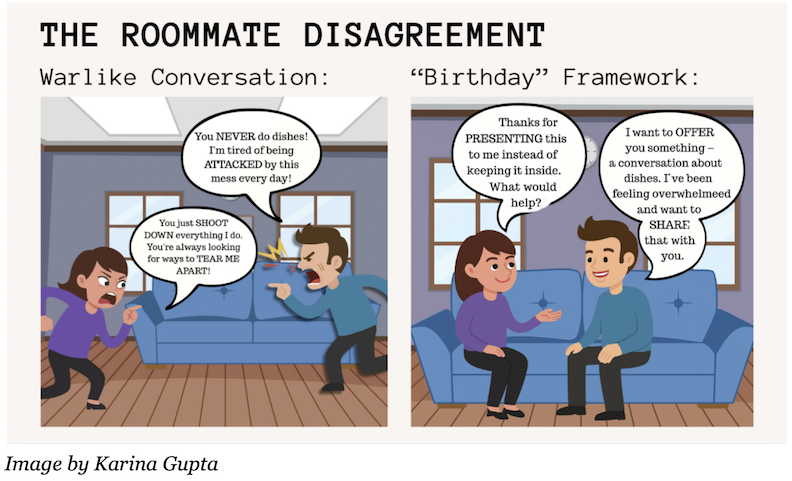
DIALOGUE IS GARDENING. Rather than a battlefield, each conversation could be seen as an open living space that participants tend together. The soil represents the context of the dialogue, history, trust, and shared experience. Each participant brings seeds, like their ideas, stories, questions, and emotions. Some seeds sprout easily, while others may take time or might not germinate at all. But the act of planting and tending still matters, because it nourishes the relationship and prepares the ground for future growth. . . . Listening carefully is like water. Ideas will not develop without attentive listening. . . . We have to weed with care because our conversations can be hijacked by stereotypes, misinformation or assumptions. Weeding in dialogue would mean noticing when harmful patterns slowly creep in. . . . Seeds may lie dormant until the conditions are just right. A difficult conversation with a friend or family member might not resolve in the moment, but weeks later, under different circumstances, something said may sprout into new awareness. Finally, we must all share our harvest. When dialogue flourishes, it bears fruit. We share new insights, mutual trust and understanding, solutions, or simply deeper human connection. These fruits can be shared between participants and spread into the wider community, enriching all of our lives. . . . When dialogue is hostile or toxic, gardeners sometimes must prune plants or even leave certain ground fallow. In dialogue, this means setting boundaries, taking breaks, or stepping back when conditions are not fertile and preserving energy and soil for when growth is possible. – Aditi Halpe
DIALOGUE IS A TREE CANOPY. Imagine lying on cool grass as you gaze up above at a blanket of leaves, dense enough to provide shade, while still scattered with gaps that let the light peek through. . . . Each leaf filters light through absorption, just as we filter thoughts as they are expressed to us. Together, the mosaic of leaves disperses a new array of light. The light has not disappeared, just as dialogue always holds space for one’s thoughts, but instead has transformed with each leaf it has touched. . . . One of the greatest gifts of dialogue is its ability to engender community and support, just as the vibrant mosaic of dozens of tree crowns forming a single canopy supports biodiversity. However, no single tree canopy is the product of all the same trees. There are often hundreds of different species coming together as one. . . . If we make a habit of being conscious of diversity and complexity, we enable growth. Thus, difference becomes not a threat to be overcome, but the very source of dialogue’s strength and potential. . . . This framework also positions dialogue as a vital tool for cleansing our collective environment. – anonymous
DIALOGUE IS COOKING. Cooking invites improvisation. Sometimes we stumble upon new dishes because of a mistake—using too much garlic, substituting one spice for another, or experimenting with an unfamiliar vegetable. In dialogue, too, mistakes or moments of misunderstanding do not ruin the entire conversation; sometimes they open pathways to creativity and unexpected findings. Thinking of dialogue as cooking can free us from the fear of getting things wrong. Instead, we cultivate a willingness to adjust and adapt to the people we engage with. . . . In a society that often values speed and efficiency, the cooking metaphor reminds us that meaningful dialogue, like a lovingly prepared meal, unfolds best at a slower pace. . . . When we are just learning how to make a dish, we need guidance: a recipe containing a set of steps to follow, or even a mentor to walk us through. In dialogue, structure is valuable and can be integrated through a set of ground rules, such as respecting the speaker, listening without interrupting, or withholding judgment. Over time, as we gain confidence and trust, we can also deviate from the recipe, adding our own takes, or even co-creating new “dishes” together. – Celina Jiang
DIALOGUE IS GARDENING. Every space hosts a specific climate that must be understood and acknowledged in order to understand what will thrive in the space and what won’t. Think of a conversation topic as a mango tree; mango trees need a specific humid climate to even have a chance at thriving within a garden. Similarly, certain themes won’t particularly flourish if your surroundings host particular histories, norms, and expectations that don’t align with your statements. . . . Understanding both who you’re talking to (seasons) and where this conversation is held (climate) will spur a level of awareness needed for any productive dialogue. . . . Without a clear pathway, a garden can be hard to get though, with the end of one row being indistinguishable from the beginning of another. Similarly, a conversation sometimes can’t reach a conclusion. It can be messy and frustrating to course through, but it is necessary to find what you are looking for. . . . Just as a garden must be watered continuously through its growth, a conversation can be given support from various outside sources. They can take the form of moderators, teachers, friends, family, and all other people that can act as an outside perspective that offers clarity to your situation. – Alyma Karbownik
DIALOGUE IS DJ’ING. Imagine a world in which we strategically transitioned from each perspective to ensure we balanced and equalized different voices. . . . Making it routine, to take a beat of silence, to hold the floor for tension, while prioritizing the need for headroom to think about what a participant has said, so it doesn’t lead to a distortion of their framework. . . . I feel that wellness in dialogue has deteriorated because of the tunnel vision the facilitator and participants possess. In DJing this looks like focusing on the gear and forgetting about the crowd. Similarly, we often become so engrossed in our individual mix of thoughts and emotions that we often share or respond defensively. . . . Additionally, DJs often look to past works to sample phrases, connecting sets to the present, and creating future instrumentation to add and expand the musical canon. Likewise, we must be historians in our dialogic efforts, resurrecting past discourse, and examining how it affects our present. . . . We then determine whether to bridge this moment to the present, or reset the floor for a new anthem. . . . DJing metaphors instead concentrate on interdisciplinary blending, getting in sync with one another, finding a groove, balancing energy, equalizing voices, and working in harmony. Although each individual has their own track, DJs crate dive through everyone’s records and diligently work to rhythmically align and layer each one. – Isaiah Littlejohn
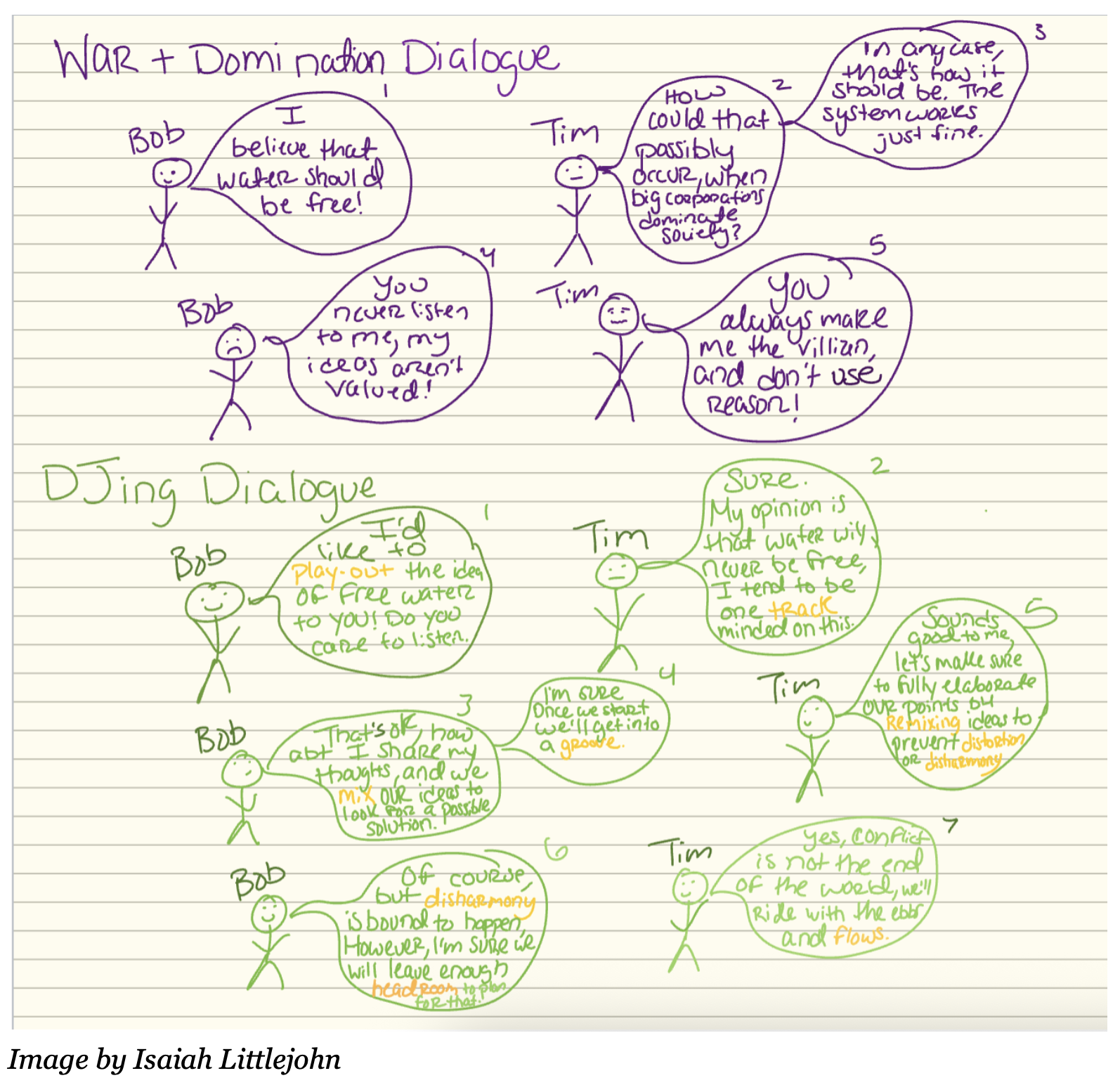
DIALOGUE IS BRUSHING YOUR TEETH. Presence changes that. It is not only what you say. You cannot brush your teeth without a brush and some form of paste. Otherwise, you do not clean them. So it is with dialogue. . . . Dialogue is like our lives; The choices we make in one sector affect all our choices. If we choose to rush through brushing our teeth, we make a judgement. We may rush to sounding right, to “getting the point across”. I have often led conversations in a way that avoids shame on my part. I brushed my teeth hard, trying to remove all the bacteria. If you force your brush down on your gums, or you swallow the paste, you are doing harm to yourself. This force might seem to help with your health. Yet the gums recede, and much of the plaque remains anyway. Too much force and justification can harm dialogue too. A sense of proving and effort can remove the relaxation and sensitivity which tends towards vulnerable, sustained conversation and communication. – Hayden Moore
DIALOGUE IS KINTSUGI. Imagine a world where we practiced dialogue as Kintsugi: the Japanese art of repairing broken pottery by mending the pieces with lacquer mixed with powdered gold, silver, or platinum. . . . If we were to perceive dialogue as the unification of fragments, where interlocutors often begin hesitant and distant, then with each additional piece of the cup (themselves) that they reveal, we are able to reassemble the cup that was once broken with the Urushi (the common bond of humanity that unites us all). . . . The underlying philosophy is that there is beauty in imperfection and it is precisely in embracing them that we find our perfection. – Socrates Okong’o
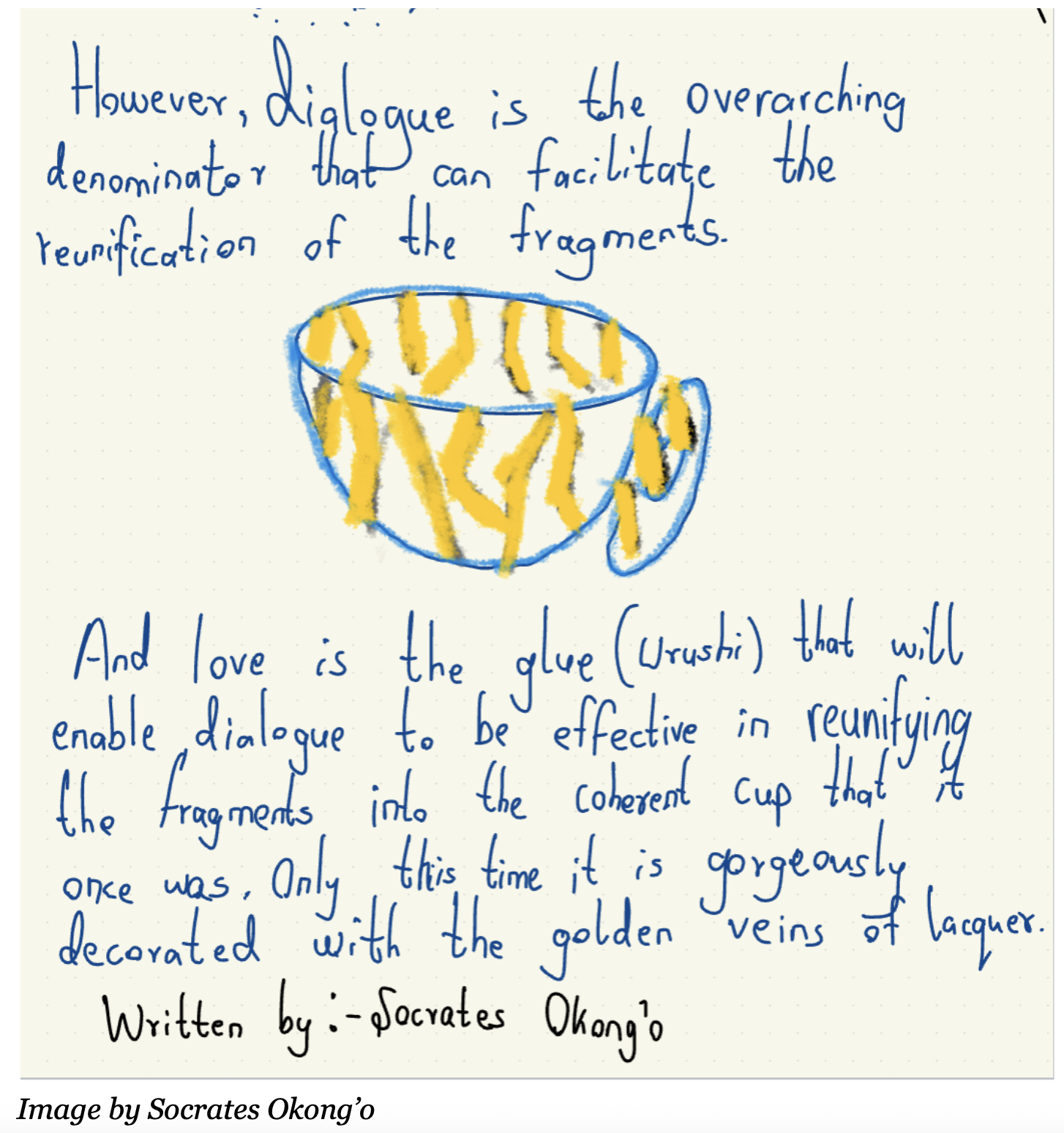
DIALOGUE IS THE BLENDING OF TWO COLOURS. The reason I consider this a good metaphor for dialogue is partly because of the fact that all of the paint is rarely used! You blot and you prod, it’s not brute, it’s careful – intentional. Dialogue should work the same way. Instead of rushing to overwhelm or cover up the other colour, we move slowly and intentionally, giving space for hues to mix. Dialogue is most alive not when one voice dominates, but when careful strokes reveal shades of meaning. . . . We do not bulldoze or force all our paint into the other person’s. Instead, we share carefully, listening and responding in a way that enriches both hues. The result is a respectful, creative purple, something neither red nor blue could achieve alone, yet still carrying traces of both. The metaphor also reminds us that blending is a process, not a single moment. An artist may try mixing colours and realize the purple is too dull or too dark. But that is not failure, it is an invitation to keep working, to adjust ratios, to layer more carefully. In the same way, a dialogue that feels messy or tense is not a broken one. It is an opportunity to step back, reconsider, and re-engage with more care. A muddy patch on the palette can still lead to a vibrant stroke on the canvas. – Samuel Pañeda
DIALOGUE IS AN UNFINISHED WORK OF ART. We instead must present ourselves as changeable, unfinished works. Unfinished beings, evolving beings. What if we approached dialogue as an opportunity to change ourselves instead of an opportunity to change others? What if we viewed dialogue as certainly a community changing practice, but as a self-changing practice first. What if we made dialogue about presenting our own vulnerabilities, our own misunderstandings, our own insecurities about our opinions instead of seeking to uncover those of our opponents? If we want to become better people, more understanding humans, isn’t the only proper approach to dialogue to present the most unfinished sectors of our identity? If we truly want to become more whole, more complete, shouldn’t we begin with the least polished parts of ourselves? – Owen Phillips
DIALOGUE IS NAVIGATING THROUGH NEW TERRAIN. Exploring the wilderness of a foreign, unfamiliar land is as literal of an expedition possible. . . . Conversation requires one to leave their status quo, their comfort zone, before genuinely tackling obstacles and barriers to open discourse. They must be able to navigate loaded topics, ask meaningful questions, respond honestly, and be respectful. And, after having engaged in the expedition that is conversation, they will return to their status quo having changed in some way. . . . A unique part of the exploration that is dialogue is that the destination is unknown. When engaged in conversation with a peer, you are invited to investigate (to non-literally explore) someone who may have different values, beliefs, and lived experiences. Conversation is fluid, and is inherently unpredictable. . . . You are guided by curiosity. You may have preconceived notions, but you will never know for sure where it will lead. . . . Without putting yourself in dangerous, sensitive, and difficult spots, you will not feel the full effect of discovery. For explorers, the most dangerous and terrifying expeditions are the most thrilling and rewarding. – Jameson Russell
DIALOGUE IS BAKING BANANA BREAD. If we thought about dialogue like baking banana bread, perhaps we could approach it as a shared effort, as opposed to a battle for dominance. My brother and I put effort into the ingredients we choose, and the amounts we pour into the batter. In a conversation, both parties must meaningfully consider the words they choose to express themselves, and maintain a balance of compassion, assertion, and openness. When there are bananas that are too mushy, we are not afraid to discard them. During dialogue, one should not be afraid to retire moot points, as well as let go of preconceived notions of “truth”. My brother and I are able to take a break when we put the bread into the oven, and then begin the necessary work of cleaning the kitchen: washing dishes, scrubbing counters, and putting away ingredients. There is nothing wrong with stepping away from dialogue in order to organize your thoughts and feelings. The bread will never develop if my brother and I do not give it time to warm. . . . Similar to how recipes are passed down through generations, we can pass on the recipe for compassionate dialogue to the people around us. – Jasleen Kaur Sidhu
DIALOGUE IS BAKING. In baking there are many ingredients that are unique, with vastly different flavors, for example both sugar and salt are needed to balance each other in many sweets. Similarly, dialogue is a combination of many different flavors of thoughts, ideas, and values brought to a table and kneaded to form a beautiful conversation. . . . When we allow dialogue to be a beautiful unison of different ideas, flavors of values, we in turn allow the conversation to be baked to perfection, not too sweet and not too bitter. . . . When we practice dialogue with mindfulness and care which are both required when baking, we are less likely to burn or scar those around us with the things we say regardless of whether or not they share the same opinion. . . . When we actively take time to listen and hear what a person has to say, allowing them their full space to rise and become golden, we are contributing to their wellness and our own. – Ghaida Tagalasfia
DIALOGUE IS A ROOM OF KEEPSAKES. Each object is not merely a possession but a fragment of relationship, a small proof of love, memory, or identity. And when I think about dialogue, I realize it is much the same: an opening of one’s door, a walk through the museum of another person’s life, and a shared curation of keepsakes that tell us who we are. . . . To speak with another is to open a door, to risk letting them wander among the fragile artifacts of memory and identity. To listen is to walk gently, with the awareness that the keepsakes are not random trinkets but sacred evidence of a life lived with and through others. If dialogue is a room of keepsakes, then each person is both curator and visitor. . . . If dialogue is a room of keepsakes, its purpose is not to win but to welcome. Speaking becomes an act of opening the door, saying: “Here is a piece of my world, and I trust you enough to step inside.” Listening, then, becomes the art of moving carefully, like a visitor in a museum where every object, no matter how ordinary, carries weight. Curiosity is what allows us to walk gently. . . . Dialogue, like a museum, contains both curated exhibitions and messy back rooms. We show others the polished galleries we’ve arranged with care like our career goals, our educational paths. But we also carry cluttered storage spaces: the boxes of unresolved questions and insecurities we haven’t yet sorted. Inviting someone into dialogue means allowing them to glimpse not only the beauty we’ve prepared but also the chaos we are still trying to understand. – Lidia Tulus
DIALOGUE IS A MUSIC RECITAL. In music, instrumentalists rely on shared baselines that make collaboration possible: a “#” raises a note by a half step, a quarter note in 4/4 time equals one beat, and piano means to play softly. Likewise, constructive dialogue requires basic structures—whether baseline facts both parties accept, a commitment not to interrupt, or even something as simple as a common language. . . . In order to come in on time, the soloist must be processing what their accompanist is doing– counting through the measures, following tempo changes, noting dynamics, and more. This continues throughout the performance as the soloist and accompanist frequently trade-off the leading role. In my perspective, this need for intentional listening is the foundation of any healthy dialogue. . . . it is essential that the two voices work together: they must be in tune with each other, move at the same pace, or provide dynamic cohesion and contrast as seems fit. When one musician carries the melody, the other might want to play a little softer; if one person begins to speed up, whether intentionally or not, the other should try and match them. – Jesse van Doren
DIALOGUE IS MUSICAL IMPROVISATION. We are both in a clammy band room seated on uncomfortable black chairs. I start with an exuberant intro, fast and articulate, and too passionate to leave room for rests. The second voice enters and complements my intro with a calming resolution, adding rests for emphasis, with lyrical phrases. Two different voices with contrasting styles that make the music work. One complements the other. . . . The beat in our environment carries us forward, a rhythmic pulse that, despite the disagreements that we might have in determining the direction of our music, holds us together. This sense of disagreement is important in showing our two unique musical voices. . . . Improvisation connects people with that sense of intention and that shared interest to create music. They do not have to make music that is agreeing and one dimensional but one that argues and considers the differences they have as individuals. – Ronnie Wang

DIALOGUE IS ORIGAMI. The versatility within the world of origami represents the connection between dialogue and diversity. Mammals. Shapes. Nature. Amphibians. Fruits. Within these broad categories exist countless subcategories. The creations are endless. Each type of origami requires different steps, folds, and techniques. It reflects the idea that you typically wouldn’t talk to a professor like you talk to a friend, nor would you talk to a stranger like you talk to a family member. You likely wouldn’t even talk to two of your friends in the same way. . . . There are only so many times a tiny piece of paper can be folded incorrectly, unraveled, and redone. In some cases, the paper reaches a point where it becomes unsalvageable. . . . The more you practice origami and try new methods, the better you become. The more you invite dialogue with people and take different approaches, the better you become. There is no learning without making mistakes and overcoming challenges, and there is no limit to how much you can learn. – Vicky Wang



